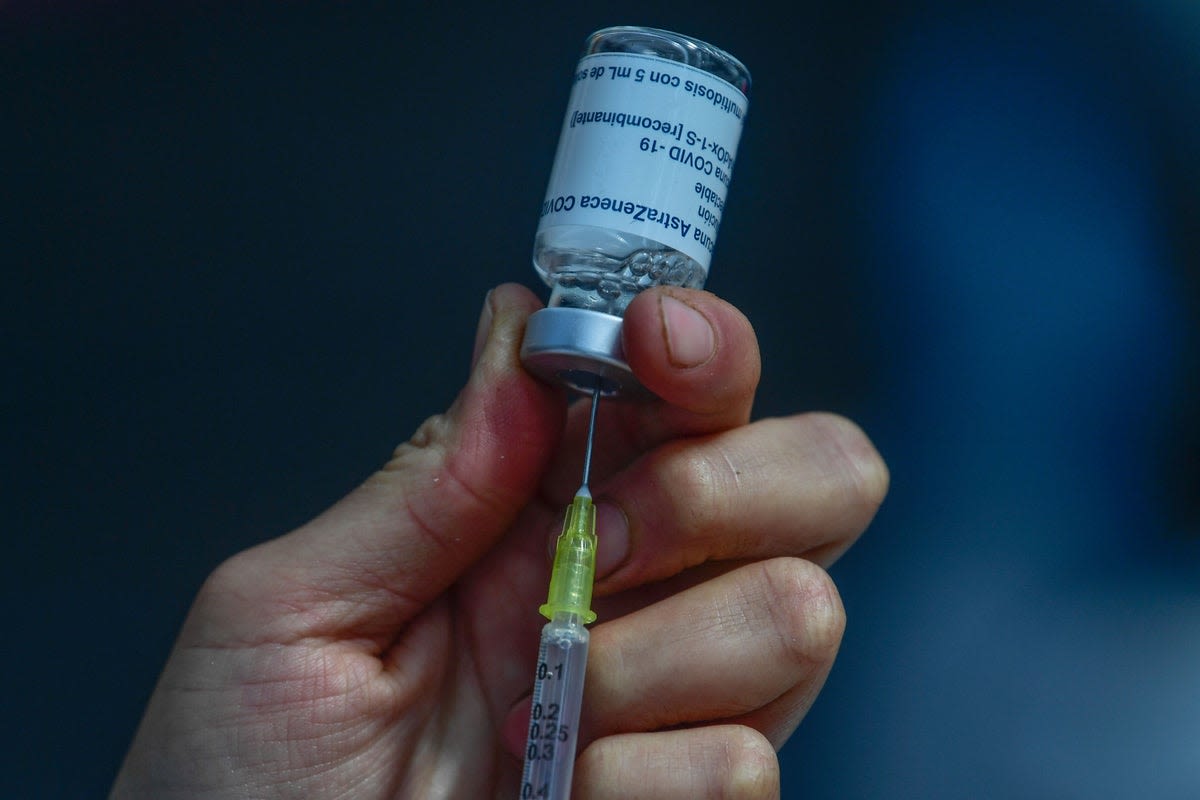Search results
CVS COVID-19 Vaccine Near Columbus OH
www.cvs.comPharmacy LocationBy appointment only1515 West Broad Street(614) 274-162055 Graceland Blvd(614) 781-9407109 South High Street Suite 100(614) 224-42611485 Polaris Pkwy(614) 781-09502532 East Main Street(614) 235-30245445 North High Street(614) 844-36993499 Clime Road(614) 276-2651News about AstraZeneca, withdrawal, Covid-19 vaccine
Dec 11, 2021 · 12 Hours After Vaccination. Other side effects may start within a few hours, or up to 12 hours after the shot. People commonly report systemic side effects, like fever, headaches, muscle aches, joint pain, chills, and fatigue. In the Pfizer-BioNTech vaccine trials, more than 77% of participants reported at least one systemic reaction.
May 1, 2024 · Side effects that don't go away after a few days are thought of as long term. Vaccines rarely cause any long-term side effects. If you're concerned about side effects, safety data on COVID-19 vaccines is reported to a national program called the Vaccine Adverse Event Reporting System in the U.S. This data is available to the public.
- Overview
- What You Need to Know
- Anaphylaxis after COVID-19 Vaccination
- Reports of Deaths after COVID-19 Vaccination
- Guillain-Barré Syndrome (GBS) after COVID-19 Vaccination
- Myocarditis and Pericarditis after COVID-19 Vaccination
- Thrombosis with Thrombocytopenia Syndrome (TTS) after COVID-19 Vaccination
- Related Pages
Updated Sept. 12, 2023
Print
Some people have no side effects. Many people have reported side effects—such as headache, fatigue, and soreness at the injection site—that are generally mild to moderate and go away within a few days.
Are the Vaccines Safe?
•The benefits of COVID-19 vaccination continue to outweigh any potential risks.
•Severe reactions after COVID-19 vaccination are rare.
•CDC recommends everyone ages 6 months and older get vaccinated to protect against COVID-19 and its potentially severe complications.
•Millions of people in the United States have received COVID-19 vaccines under the most intense safety monitoring program in U.S. history.
Anaphylaxis after COVID-19 vaccination is rare. It has occurred at a rate of approximately 5 cases per one million vaccine doses administered. Anaphylaxis, a severe type of allergic reaction, can occur after any kind of vaccination. If it happens, healthcare providers can effectively and immediately treat the reaction. Learn more about COVID-19 vaccines and allergic reactions, including anaphylaxis.
CDC scientists have conducted detailed reviews of cases of anaphylaxis and made the information available to healthcare providers and the public.
Multiple factors contribute to reports of death after COVID-19 vaccination, including heightened public awareness of COVID-19 vaccines, requirements under FDA authorization for COVID-19 vaccines that healthcare providers report any death after COVID-19 vaccination to VAERS (even if it is unclear whether the vaccine was the cause), and reporting requirements in CDC vaccine provider agreements. People receiving COVID-19 vaccines are less likely to die from COVID-19 and its complications and are at no greater risk of death from non-COVID causes, than unvaccinated people.
CDC scientists and partners have performed detailed assessments of deaths after COVID-19 vaccination and made the information available to healthcare providers and the public.
GBS is a rare disorder in which the body’s immune system damages nerve cells, causing muscle weakness and sometimes paralysis. GBS has largely been observed among people ages 50 years and older.
Based on an analysis of data from the Vaccine Safety Datalink (VSD), the rate of GBS within the first 21 days following J&J/Janssen COVID-19 vaccination was found to be 21 times higher than after Pfizer-BioNTech or Moderna (mRNA) COVID-19 vaccination. After the first 42 days, the rate of GBS was 11 times higher following J&J/Janssen COVID-19 vaccination. The analysis found no increased risk of GBS after Pfizer-BioNTech or Moderna vaccination.
Similarly, CDC found higher than expected rates of GBS reported to VAERS after J&J/Janssen COVID-19 vaccination but not after mRNA COVID-19 vaccination. These observations contributed to the preferential recommendation by the Advisory Committee on Immunization Practices (ACIP) to use mRNA COVID-19 vaccines over the J&J/Janssen COVID-19 vaccine, which is no longer available in the United States.
CDC and FDA will continue to monitor for and evaluate reports of GBS occurring after COVID-19 vaccination and will share more information as it becomes available.
Myocarditis and pericarditis after COVID-19 vaccination are rare. Myocarditis is inflammation of the heart muscle, and pericarditis is inflammation of the outer lining of the heart. Most patients with myocarditis or pericarditis after COVID-19 vaccination responded well to medicine and rest and felt better quickly, and most cases have been reported after receiving mRNA COVID-19 vaccines.
To date, evidence indicates that the benefits of mRNA COVID-19 vaccination outweigh the risk of myocarditis. CDC and FDA will continue to monitor for and evaluate reports of myocarditis and pericarditis after COVID-19 vaccination. Learn more about myocarditis and pericarditis, including clinical considerations, after mRNA COVID-19 vaccination.
Data from VSD and from VAERS indicate that rates of myocarditis after COVID-19 vaccination are highest among males in their late teens and early 20s, usually following the second dose of the vaccine.
CDC scientists have conducted detailed reviews of cases of myocarditis and pericarditis after COVID-19 vaccines and have made the information available to healthcare providers and the public.
Thrombosis with thrombocytopenia syndrome (TTS) has been rarely observed after J&J/Janssen COVID-19 vaccination and has occurred in approximately 4 cases per one million doses administered. TTS is a rare but serious adverse event that causes blood clots in large blood vessels and low platelets (blood cells that help form clots).
A review of reports indicates a causal relationship between the J&J/Janssen COVID-19 vaccine and TTS. This observation contributed to the preferential recommendation by ACIP to use mRNA COVID-19 vaccines over the J&J/Janssen COVID-19 vaccine, which is no longer available in the United States.
•Safety of COVID-19 Vaccines
•Vaccine Adverse Event Reporting System (VAERS): What Reports Mean and How VAERS Works
•COVID-19 Vaccine Safety Publications
Last Updated Sept. 12, 2023
Aug 22, 2021 · Do the vaccine side effects mimic COVID-19 symptoms? ... An increased risk of blood clots can last for nearly a year after a COVID-19 diagnosis . April 3, 2024 / Rheumatology & Immunology.
Mar 21, 2022 · COVID-19 vaccines are now FDA approved for those ages 5 and up.Here are some of the side effects reported by age. Children. FDA approval of the COVID-19 vaccine for children ages 5 to 11 happened ...
- Rachel Nall, MSN, CRNA
May 5, 2023 · Others have side effects that affect their ability to do daily activities. Side effects generally go away in a few days. Even if you don’t experience any side effects, your body is building protection against the virus that causes COVID-19. Adverse events (serious health problems) are rare but can cause long-term health problems. They usually ...
Vaccines, like any medicine, can have side effects. Side effects after getting a COVID-19 vaccine vary from person to person. The most common side effects are usually mild, such as soreness in the area where the shot was given. Severe allergic reactions following vaccination are rare but can be life threatening.




